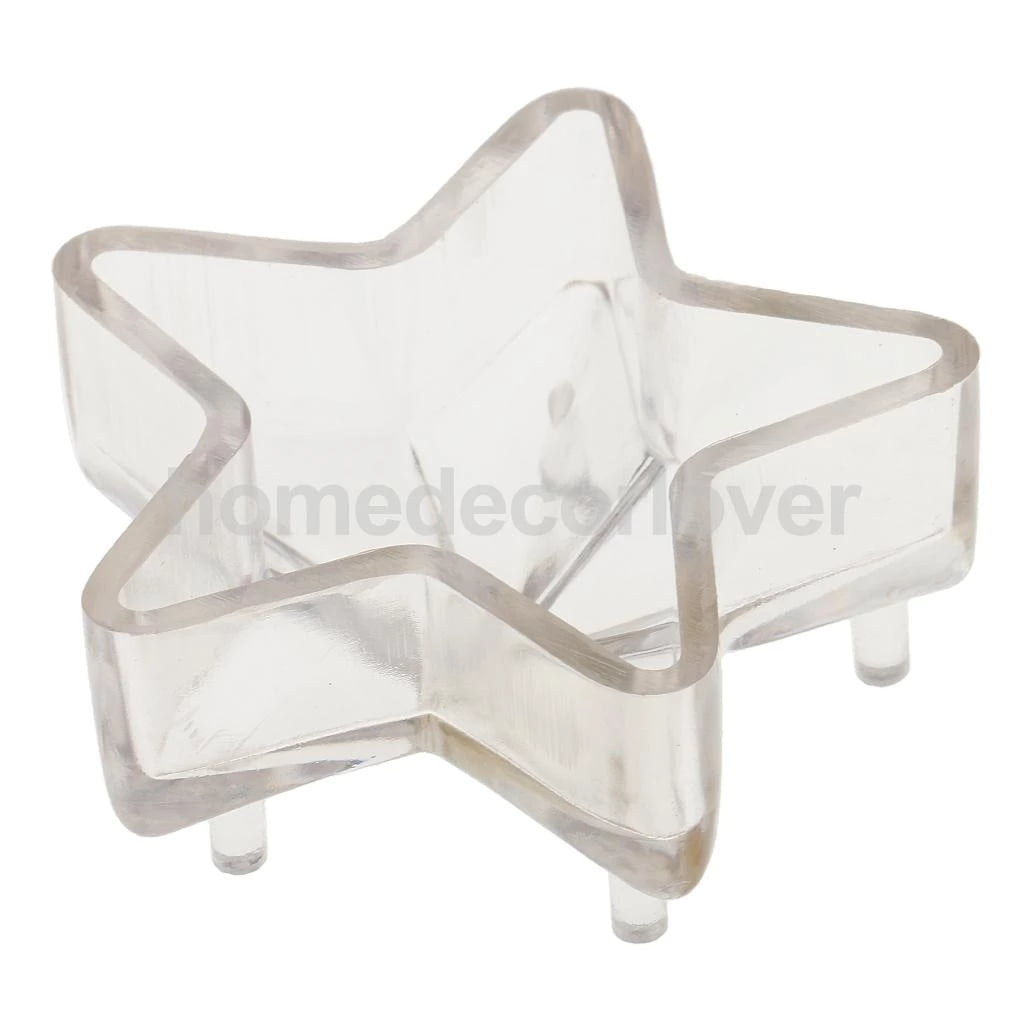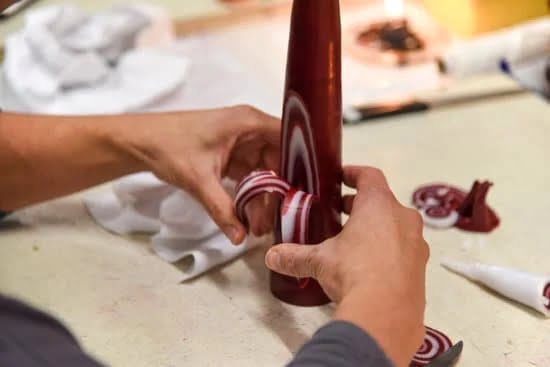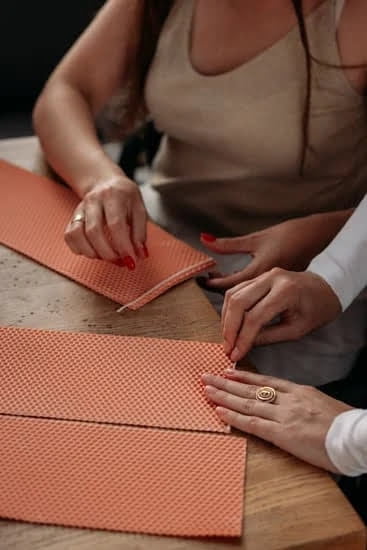Is making candles a form of cooking? This question may seem unconventional, but upon closer examination, the art of candle making shares some surprising similarities with the culinary process. In this article, we will delve into the intriguing connection between candle making and cooking, exploring the history, art, science, and sensory experience behind both practices.
Candle making has a rich history dating back thousands of years, with its origins rooted in early civilizations’ need for light sources. From ancient tallow candles to modern soy wax creations, the evolution of candle making reflects humanity’s ingenuity and resourcefulness in illuminating their surroundings. Similarly, the history of cooking also parallels this narrative of innovation and adaptation as people sought to create nourishing meals from diverse ingredients.
The art and science of candle making encompass a delicate balance of aesthetics and technical knowledge. From choosing the right wicks to understanding how different types of wax interact with fragrance oils, there is a precision and creativity involved in crafting each unique candle.
Similarly, cooking involves mastering the art of flavor combinations and techniques while understanding the science behind ingredient reactions and cooking methods. These parallels highlight the intricate craftsmanship that both candle making and cooking demand from their practitioners.
The History and Origin of Candle Making
Candle making has a long and fascinating history that dates back thousands of years. The art of making candles is believed to have originated in ancient Egypt, where reeds were dipped in melted animal fat to create an early form of candle. These early candles served as a source of light and were also used in religious ceremonies.
The process of candle making continued to evolve over the centuries, with civilizations around the world developing their own methods and materials for creating candles. In ancient Rome, for example, candles were made from tallow or beeswax, and the wick was often made from papyrus. The Chinese are also credited with creating early forms of candles using whale fat and rice paper as wicks.
During the Middle Ages in Europe, candle making became an established trade, with guilds and associations dedicated to the craft. Tallow, beeswax, and other natural materials were commonly used to create candles, and they played a crucial role in providing light for households and churches before the advent of electricity. It wasn’t until the 19th century that paraffin wax was introduced as a more affordable alternative for candle making, revolutionizing the industry.
Today, modern candle making continues to build upon this rich history and tradition, incorporating new techniques and materials while still honoring the legacy of those early candle makers. Whether it’s using soy wax or experimenting with unique fragrance combinations, candle making has evolved into both an art form and a practical skill that continues to captivate people around the world.
Overall, understanding the history of candle making allows us to appreciate its cultural significance and recognize how this ancient practice continues to thrive in today’s society.
The Art and Science of Candle Making
Combining Artistry and Chemistry
Candle making is a unique blend of artistry and chemistry. Crafting the perfect candle requires an understanding of how different waxes, fragrances, and wicks interact with each other. The science behind candle making involves knowledge of melting points, fragrance ratios, and combustion processes. At the same time, artisans infuse their creativity into the process by choosing colors, shapes, and scents to create one-of-a-kind candles.
The Role of Temperature and Timing
Temperature plays a crucial role in the success of candle making. The wax must be heated to a specific temperature before adding any fragrance or colorants. Similarly, timing is important when it comes to pouring the wax into containers or molds. Understanding these factors is essential for creating high-quality candles that burn evenly and emit appealing aromas.
Experimentation and Innovation
In addition to following established techniques, candle makers often engage in experimentation and innovation to develop new products. They may explore different types of wax, try unusual combinations of fragrances, or design unconventional shapes for their candles. This aspect of candle making allows artisans to continually push the boundaries of their craft and bring fresh ideas to the market.
As we delve deeper into the art and science of candle making, it becomes evident that this process requires a delicate balance between technical knowledge and creative expression. By mastering both aspects, artisans can produce candles that are not only visually stunning but also functionally superior in terms of aroma diffusion and burn performance.
The Ingredients and Supplies Needed for Candle Making
When it comes to making candles, having the right ingredients and supplies is crucial for a successful and safe process. The key ingredients needed for candle making are wax, wick, fragrance oil, and dye. The type of wax used can vary and includes options such as soy wax, paraffin wax, beeswax, or even a combination of these. Each type of wax has its own unique qualities that can affect the scent throw, burning time, and appearance of the finished candle.
In addition to wax and wick, fragrance oils are essential for adding pleasant scents to the candles. These oils come in a wide range of options, allowing candle makers to create customized scents for their products. Dyes are also used to add color to the candles if desired.
When it comes to supplies for candle making, some essential items include a double boiler or melting pot for melting the wax, a thermometer for monitoring temperature, molds or containers for shaping the candles, and a heat source such as a stove or hot plate. Additionally, tools like stirring spoons and measuring cups are important for precise candle making.
A Comparison Between Candle Making and Cooking
| Ingredients | Supplies |
|---|---|
| Wax | Double boiler |
| Wick | Thermometer |
| Fragrance oil | Molds or containers |
| Dye | A heating source (stove or hot plate) |
Step-by-Step Process of Making Candles
Candle making is a craft that has been around for centuries and has evolved over time. The process of making candles involves several steps, each of which contributes to the final product. Here’s a look at the step-by-step process of making candles.
Gathering Supplies
The first step in making candles is to gather all the necessary supplies. This includes wax, wicks, fragrance oils, color dyes, a double boiler or melting pot, and a thermometer. It’s important to have all these items on hand before starting the candle making process.
Melting the Wax
Once all the supplies are ready, the next step is to melt the wax. This is typically done using a double boiler or melting pot to ensure even heating. The wax should be melted to a specific temperature based on the type of wax being used.
Adding Fragrance and Color
After the wax is fully melted, fragrance oils and color dyes can be added. The amount of fragrance and dye used will depend on personal preference and the desired outcome for the candle.
Pouring and Setting
Once the fragrance and color are mixed into the melted wax, it’s time to pour the mixture into candle molds or containers. The wick should be properly centered as the wax sets to ensure an even burn.
These steps demonstrate that candle making involves a series of processes similar to cooking, from gathering ingredients (supplies) to mixing (melting) and adding flavors (fragrance and color). While it may not involve traditional cooking methods with heat and food, many aspects of candle making align with those found in cooking, blurring the lines between these two practices.
Overall, this section seeks to shed light on how making candles encompasses various steps akin to those in cooking – gathering supplies, melting ingredients together, adding elements for flavor/coloring (scented oils, coloring dyes), pouring into molds/containers – thus considering it as an art form that intersects with culinary processes.
A Comparison Between Candle Making and Cooking
Candle making and cooking may seem like entirely different activities, but there are surprising similarities between the two. Both involve mixing ingredients, applying heat, and producing a final product that appeals to the senses. In this section, we will delve into the comparison between candle making and cooking and explore how these seemingly unrelated activities share common ground.
One of the most apparent similarities between candle making and cooking is the process of combining various ingredients to create a finished product. In cooking, different food items are mixed together to form a dish with specific flavors and textures.
Similarly, in candle making, different types of wax, fragrance oils, and dyes are blended to produce a candle with its unique scent and color profile. The art of achieving the perfect balance of ingredients is crucial in both candle making and cooking.
Another striking similarity between these two activities is the application of heat as part of the process. While cooking involves using heat to transform raw ingredients into edible dishes, candle making requires melting wax and other additives before pouring them into molds. The role of temperature control in both processes also highlights how precision is essential for achieving the desired outcome – whether it’s a delicious meal or a beautifully crafted candle.
Furthermore, both candle making and cooking appeal to our senses in profound ways. The aroma of food being prepared in the kitchen can evoke feelings of comfort and nostalgia, just as the scent of a freshly made candle can create an atmosphere of tranquility or invigoration.
Additionally, visually appealing presentations are valued in both activities – whether it’s an exquisitely plated meal or an elegantly designed candle. Ultimately, both endeavors strive to deliver sensory experiences that bring joy and contentment to those who partake in them.
The Sensory Experience of Candle Making
When selecting fragrances for candles, individuals can explore a wide range of scents that evoke different emotions and memories. For example, lavender is often associated with relaxation and tranquility, while citrus scents can provide an invigorating and uplifting atmosphere. The act of blending these fragrances together to create a harmonious aroma is akin to creating a complex dish or cocktail in cooking, as it requires an understanding of how different scents complement each other.
Furthermore, the sound of crackling wooden wicks or the sight of swirling colors as they mix together in the wax add another layer to the sensory experience of candle making. These elements engage not only our sense of touch and sight but also our capacity for creativity and artistic expression. In this way, candle making becomes more than just a craft; it becomes an immersive journey that appeals to multiple senses simultaneously.
In contrast to traditional cooking where taste and smell are dominant factors, we can conclude that while making candles does engage some sensory experiences similarly to cooking, it is not entirely accurate to consider it a form of cooking. Rather, candle making stands on its own as a unique sensory experience that offers individuals a creative outlet and an opportunity for self-expression through engaging multiple senses in a different way than cooking does.
The Benefits of Candle Making for Mental Wellbeing
Candle making is not only a creative and enjoyable hobby, but it also offers several mental health benefits. Engaging in this craft can have a positive impact on one’s overall wellbeing, providing individuals with an outlet for self-expression and relaxation. Below are some of the benefits of candle making for mental health:
1. Stress Relief: The process of melting the wax, adding fragrance, and carefully pouring it into molds can be incredibly therapeutic. This hands-on activity allows individuals to focus on the task at hand, relieving stress and promoting mindfulness.
2. Creative Expression: Designing and creating unique candles allows for creative expression, which is essential for maintaining good mental health. Choosing different scents, colors, and shapes provides an outlet for artistic expression and encourages individuals to explore their creativity.
3. Sense of Accomplishment: Completing a homemade candle can provide a sense of accomplishment and pride. It offers a tangible result that can boost self-esteem and confidence, contributing to a positive mindset.
Conclusion
In conclusion, the process of making candles shares some similarities with cooking, but it ultimately falls outside the realm of traditional culinary arts. While both activities involve mixing ingredients and following a step-by-step process to create a final product, the end goals and purposes are distinctly different. Cooking is centered around the preparation of food for nourishment and enjoyment, while candle making is focused on creating decorative and aromatic products for ambiance and relaxation.
The sensory experience of candle making, including selecting fragrances and watching wax transform into beautiful shapes, can be deeply rewarding and therapeutic. The act of creating something with your hands has been shown to have positive effects on mental wellbeing, providing a sense of accomplishment and creativity. Additionally, the calming scents of essential oils or fragrances used in candle making can contribute to a peaceful environment, promoting relaxation and stress relief.
While there are overlaps between candle making and cooking in terms of technique and creativity, the foundational differences in their purposes set them apart. So no, making candles is not truly a form of cooking.
Instead, it is its own unique craft that offers its own set of benefits for those who practice it. Whether as a hobby or a business venture, candle making continues to be an art form appreciated by many for its ability to enhance environments and uplift moods.
Frequently Asked Questions
What Are You Called When You Make Candles?
The person who makes candles is often called a chandler. This term has been used historically to refer to candle makers, and while it’s less common today, it still accurately describes the craft.
Is Candle Making Considered Manufacturing?
Yes, candle making is considered a form of manufacturing because it involves the process of creating a product from raw materials. It requires careful planning, precision, and quality control to produce candles on a large scale.
Is Candle Making Considered a Craft?
Candle making can be considered a craft, especially when it’s done on a smaller scale or as a hobby. Many people enjoy the artistic and hands-on aspects of making candles, from choosing scents and colors to pouring and shaping the wax. It can be seen as an art form that allows for creativity and personal expression.

Welcome to my candle making blog! In this blog, I will be sharing my tips and tricks for making candles. I will also be sharing some of my favorite recipes.





